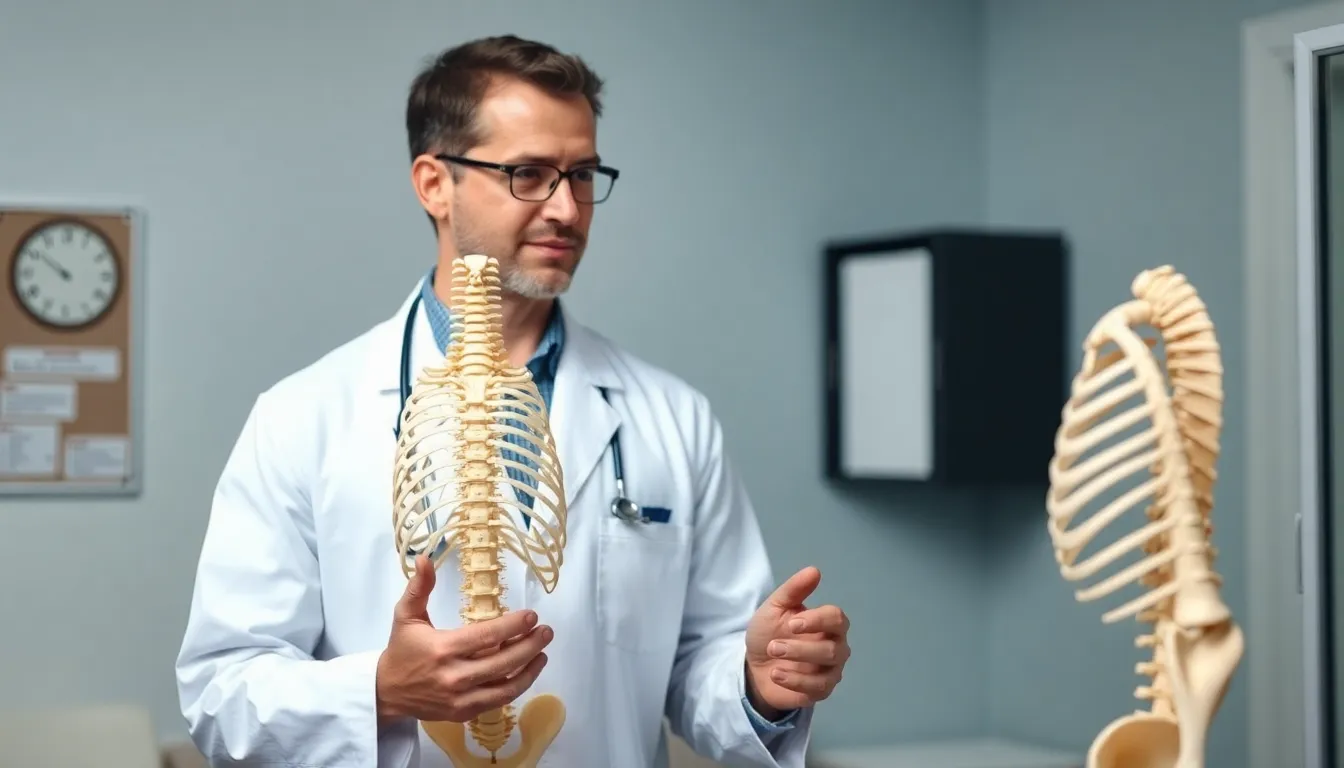Table of Contents
ToggleIn the vast world of medical codes, CID10M545 stands out like a unicorn at a horse race. It’s not just another alphanumeric jumble; it’s a key to understanding a specific diagnosis. For healthcare professionals and patients alike, deciphering this code can feel like solving a Rubik’s Cube blindfolded. But fear not! This article will unravel the mysteries behind CID10M545, making it as easy as pie—maybe even easier, depending on how good one is at baking.
Overview of Cid10m545
Cid10m545 refers to a specific medical diagnosis code used in ICD-10-CM (International Classification of Diseases, Tenth Revision, Clinical Modification). This code is essential for categorizing various health conditions for insurance coding and medical record keeping. It ensures that healthcare providers can uniformly communicate information about patient health, making diagnoses clearer and treatment plans more effective.
The code itself relates to conditions involving the muscles, particularly within the lower back. Accurate understanding of this code allows for proper documentation and billing by healthcare professionals. Medical coders utilize Cid10m545 to identify specific muscular issues, leading to targeted treatment options for patients.
In clinical settings, the interpretation of Cid10m545 often relates to diagnostic assessments and patient evaluations. This helps healthcare providers develop appropriate management strategies for muscular conditions. It includes options such as physical therapy, medication, or surgical interventions tailored to individual needs.
When clinicians use this code, they contribute to a larger dataset that aids in research and public health reporting. Health organizations can analyze trends and improve care quality through this collected data. Familiarity with Cid10m545 is crucial for ensuring accurate coding, thus fostering efficient healthcare delivery.
Healthcare professionals are encouraged to stay updated on coding guidelines, as these can change over time. Proper coding practices enhance communication among providers and assist in receiving timely reimbursements. Understanding Cid10m545 offers valuable insights into muscular conditions, leading to better health outcomes for patients overall.
Mechanism of Action

CID10M545 refers to specific muscular conditions affecting the lower back. Understanding its mechanism of action plays a crucial role in formulating effective treatment plans.
Pharmacological Properties
Medications targeting CID10M545 often include non-steroidal anti-inflammatory drugs (NSAIDs) and muscle relaxants. NSAIDs work by inhibiting cyclooxygenase enzymes, thereby reducing inflammation and pain. Muscle relaxants help alleviate muscle spasms, promoting relaxation of the affected area. Specific agents, like ibuprofen and cyclobenzaprine, have shown effectiveness in managing symptoms. These pharmacological treatments enable healthcare professionals to tailor strategies to suit individual patient needs.
Biological Effects
The biological effects associated with CID10M545 impact muscle tone and pain perception. Adjustments in neurotransmitter levels occur, influencing pain pathways in the nervous system. Additionally, inflammation in the muscle tissue leads to discomfort and limited mobility. Reacting to these changes, the body may initiate healing processes, yet prolonged conditions can result in chronic pain syndromes. Understanding these biological implications aids clinicians in monitoring recovery and enhancing patient outcomes.
Clinical Applications
CID10M545 plays a vital role in diagnosing and managing lower back muscular conditions. This code aids in the categorization of various health conditions, which benefits healthcare providers and patients alike.
Approved Indications
CID10M545 specifically addresses lower back pain resulting from muscular issues. Therapies, including physical therapy and pharmacological treatments, target patients with this diagnosis to enhance their recovery. Non-steroidal anti-inflammatory drugs (NSAIDs) and muscle relaxants are frequently prescribed to manage inflammation and alleviate pain. Effectiveness increases when treatment plans align with the patient’s unique symptoms and conditions. Proper coding using CID10M545 ensures consistent communication among healthcare providers, ultimately leading to more effective management strategies.
Emerging Uses
Clinical research uncovers new applications for CID10M545, expanding its relevance in managing other related conditions. Studies suggest that its use might extend into chronic pain management and rehabilitation for sports injuries. Incrementally, healthcare providers may consider applying CID10M545 to augment treatment plans for conditions like fibromyalgia and whiplash injuries. As awareness increases, more clinicians may integrate this code into their practices. Continuous exploration enhances understanding of CID10M545, which could lead to improved patient outcomes in diverse muscular conditions.
Safety and Efficacy
CID10M545 has implications for safety and efficacy in the management of lower back muscular conditions. Understanding potential adverse effects and comparing treatment effectiveness are critical for optimizing patient care.
Adverse Effects
Adverse effects can vary based on the treatment administered under CID10M545. Non-steroidal anti-inflammatory drugs (NSAIDs) may lead to gastrointestinal issues, including ulcers and bleeding. Muscle relaxants might cause drowsiness or dizziness, impacting daily activities. Monitoring for these side effects ensures that healthcare professionals adjust treatment plans effectively. Awareness of the risks associated with medications enhances patient safety and contributes to better adherence to therapy.
Comparative Effectiveness
Comparative effectiveness research evaluates how different treatments under CID10M545 stack up against each other. Physical therapy often proves beneficial in improving mobility and reducing pain compared to medication alone. Studies indicate that combining therapies can lead to superior outcomes in managing lower back pain. Addressing patient preferences and clinical responses facilitates the selection of the most appropriate treatment options. Emphasizing evidence-based practices informs clinicians seeking to enhance recovery and improve overall patient well-being.
Understanding CID10M545 is vital for effective management of lower back muscular conditions. Its role in accurate documentation and coding enhances communication among healthcare providers and supports patient care. By recognizing the complexities associated with this code, professionals can develop tailored treatment plans that address individual needs.
The insights gained from CID10M545 not only improve clinical practices but also contribute to ongoing research and public health efforts. As the landscape of healthcare evolves, staying informed about coding guidelines and treatment implications will ensure better health outcomes for patients navigating muscular issues.




